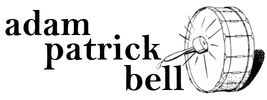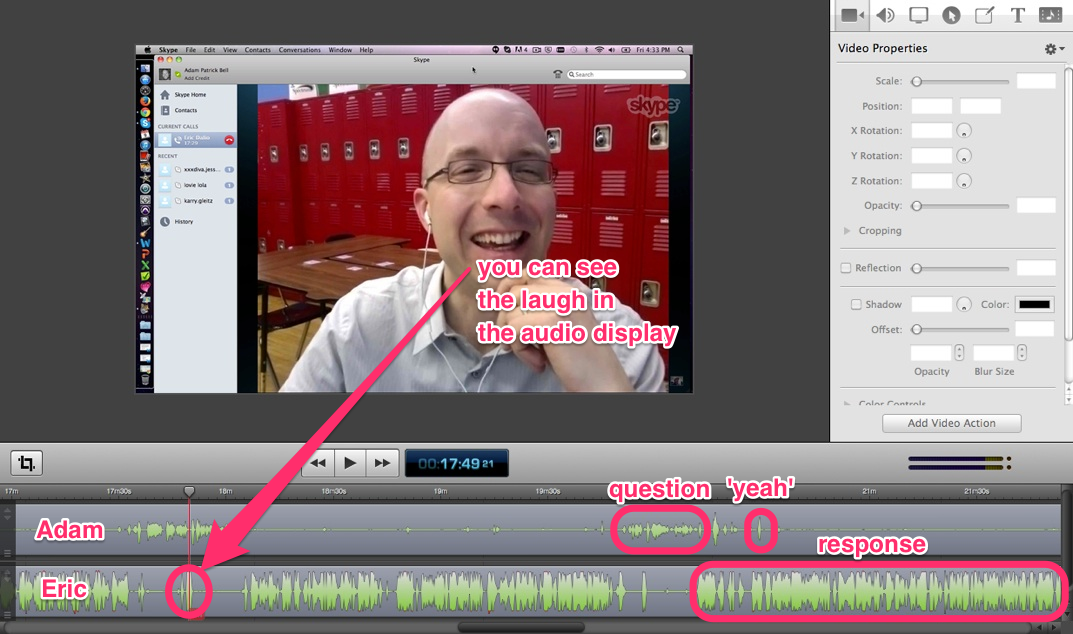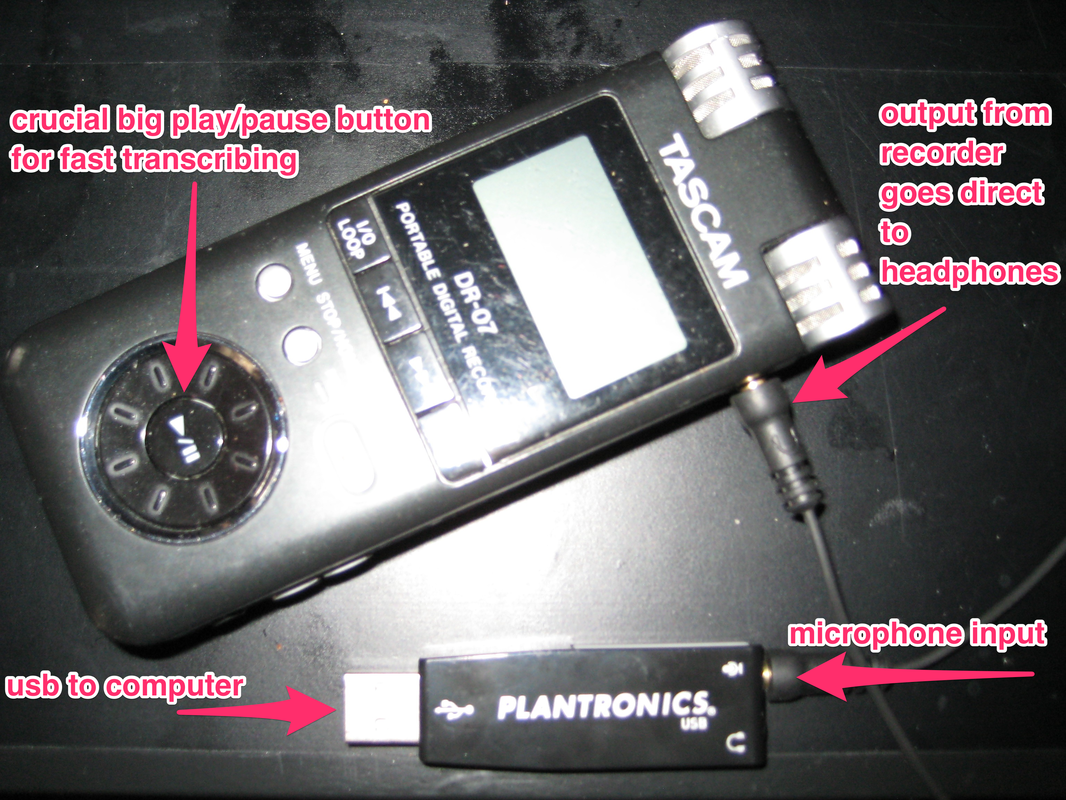This method works best with structured and semi-structured interviews. I use ScreenFlow, a basic but excellent screencasting program for mac. (Fair warning: screencasting a Skype interview consumes a colossal amount of storage.) Because screencasting a Skype conversation records two different sources of audio (your microphone and the interviewee's microphone), you get two separate audio files. In the photo below you can see precisely when I (Adam) ask a question and when the interviewee (Eric) responds. If you're somewhat accustomed to seeing audio displayed as a dynamic waveform as pictured below or from using Soundcloud, or a digital audio workstation (DAW), it's fairly easy to tell the difference between a few sentences strung together and a brief interjection. Below I've annotated a screenshot to show an example of where I asked a question and briefly interrupted Eric's response with a "yeah."
So how does this save time? If your interview has some structure (again, structured and semi-structured interviews are the most compatible with this method) you can simply glance at the waveforms and know when you asked a question. If you followed your script, you should have a good idea of where in the timeline you asked a specific question. You should also be able to discern the difference between an improvised prompt (e.g., "Tell me more about that.") and a question based on the length of the waveform. Jotting down a few cue points during the interview will help with this too. If you decide in your analysis to focus on specific questions/topics, you can expedite your process by only transcribing the responses to those questions.
The interview doesn't have to be conducted online to get the two separate audio files, but you need to have two microphones recording to separate tracks on a DAW to do this with an in-person interview. And, to state the obvious, you don't get the video data (unless you go all out and wear a GoPro).
So how does this save time? If your interview has some structure (again, structured and semi-structured interviews are the most compatible with this method) you can simply glance at the waveforms and know when you asked a question. If you followed your script, you should have a good idea of where in the timeline you asked a specific question. You should also be able to discern the difference between an improvised prompt (e.g., "Tell me more about that.") and a question based on the length of the waveform. Jotting down a few cue points during the interview will help with this too. If you decide in your analysis to focus on specific questions/topics, you can expedite your process by only transcribing the responses to those questions.
The interview doesn't have to be conducted online to get the two separate audio files, but you need to have two microphones recording to separate tracks on a DAW to do this with an in-person interview. And, to state the obvious, you don't get the video data (unless you go all out and wear a GoPro).



 RSS Feed
RSS Feed